
Resource
What You Need to Know: Early Intervention
Parents can request an early intervention evaluation to find out if their child qualifies for services.
Details
The birth of a new baby is a time of great hope and opportunity. This sense of hope is reinforced by science, which has significantly enhanced our knowledge about how infants and toddlers develop and the ways we can support them.
We know that the early years establish the foundation upon which later learning and development take place. Although babies grow and develop at different rates, most follow a predictable path and learn to walk, talk, and gain new skills in expected ways.
For some young children, however, development unfolds according to a slower timetable or in an atypical fashion. For those infants and toddlers with a disability or developmental delay, intervening early can make all the difference in the world. Early intervention for infants and toddlers provides services and supports to promote the best possible developmental outcomes, and it enhances the capacity of families to meet their child’s needs. For children at significant risk, early intervention can serve as a protective buffer against the multiple adverse influences that may hinder their developmental progress.
If the promise of a bright future is to be realized for all young children, policymakers should permanently authorize and adequately fund services of the Early Intervention Program of the Individuals With Disabilities Education Act (IDEA Part C) to ensure the optimal development of infants and toddlers with or at risk of developmental delays.
Approximately 1 in 6 children in the US has a developmental delay, disorder, or disability.
The Early Intervention Program for Infants and Toddlers With Disabilities, or Part C of the Individuals With Disabilities Education Act (IDEA), is a federal grant program that assists states in operating a comprehensive statewide program of services and supports for children birth through 2 years old with developmental delays, including (at state option) children who are “at risk” of developing a delay or special need that may affect their development or impede their education.
The Early Intervention program was established in 1986, and most recently reauthorized in 2004.
States vary widely in the type of quantitative criteria they use to describe a developmental delay, as well as in the level of delay required for eligibility for Part C services. In addition to identifying children who are experiencing developmental delays or who have a diagnosed physical or mental condition that has a high probability of resulting in development delay, states can choose to provide services to infants and toddlers who would be at risk of experiencing a substantial developmental delay if early intervention services were not provided.
In order for a state to participate in the program, it must ensure that early intervention will be available to every eligible child and his or her family. The governor must designate a lead agency to receive the grant and administer the program and must appoint an Interagency Coordinating Council (ICC) to advise and assist the lead agency. Annual funding to each state is based upon census figures of the number of children, birth through 2 years old, in the general population.

The current IDEA 2004 Statute (P.L. 108-446) for Part C contains many requirements states must meet, and it specifies the minimum components of a comprehensive statewide early intervention system. New proposed regulations for Part C were issued on May 9, 2007 by the Office of Special Education and Rehabilitative Services at the U.S. Department of Education. These regulations, when issued in their final form, will reflect the changes resulting from IDEA 2004 and provide guidance to states on how Part C is to be implemented.
In 2023, approximately 540,000 infants and toddlers received early intervention services under Part C. Nationally, about 7% of US children under age 3 receive services.
Early Childhood assistance Technical Center
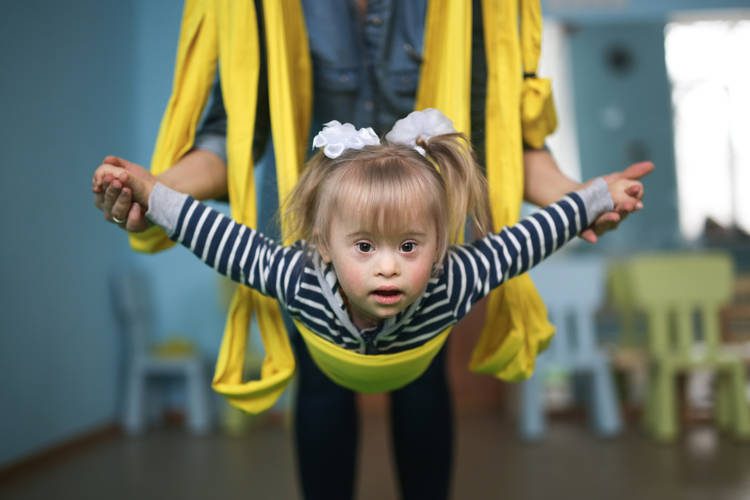
The earlier children are identified and provided with carefully designed intervention and family supports, the more they benefit by gains in cognitive, language, and social development, and later in higher academic and life achievement. These services and supports best serve children when they are coordinated and collaborative. For example, early screening and identification should include:
HealthySteps helps connect families to early intervention services.
The 2004 reauthorization of IDEA continued Part C as a discretionary grant program without permanent authorization. In addition, Part C funding is unusually designated as payor of last resort, requiring that all federal, state, local and private resources be exhausted prior to using Part C funds. As states continually struggle with the need to adjust or expand the array of resources to support an integrated early intervention system, they are faced with financing systems that are unstable, inadequate, and complex.
It is important to permanently authorize the Part C program with a sufficient and stable base of funding. Doing so will ensure responsive and effective services and supports for infants and toddlers with or at risk of developmental delays or disabilities and their families—significantly boosting the promise of a bright future for children, families, and communities.
Part C allows states to provide services to infants and toddlers who are at risk of developmental delay. More than 50% of children in early intervention had two or more risk factors; one in five children had four or more. Research suggests that the potential for negative developmental outcomes increases substantially when a child has multiple risk factors.
States may include children with a history of significant biological or medical conditions (e.g., low birth weight or failure to thrive) and/or children who are at risk due to environmental factors such as poverty, homelessness, substantiated child abuse or neglect, parental age, parental illegal substance abuse, and parental mental illness. As of 2021, only eight states serve at-risk children, even though it is well documented that young children with multiple risk factors are the most vulnerable to poor health and development. States should expand their definitions to include these at-risk infants.
Infants and toddlers who have been maltreated are six times more likely than the general population to have a developmental delay. Children entering early intervention are far more likely than the general population to be in foster care
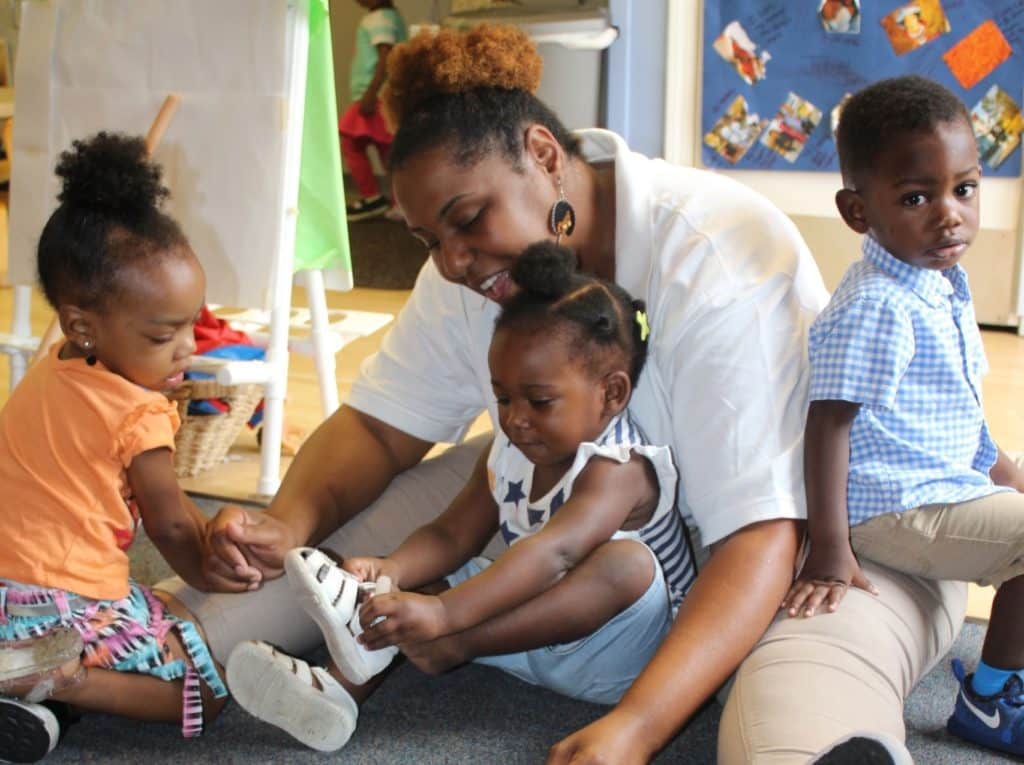
Infants, toddlers, and their families thrive when they are able to live, learn and play in the “natural environments” in their own communities—including the settings in which children without disabilities participate. To ensure inclusive experiences, children with disabilities and developmental delays should have full access to early care and to education, health, social and recreational services. Successful inclusion requires collaboration at all levels, appropriately trained personnel, cultural responsiveness, and a framework that emphasizes parent-child and peer interactions in typical routines and natural environments.
Research clearly links well-trained and qualified providers to better child outcomes. Expert consultation and training for providers is necessary to effectively support infants, toddlers, and their families who confront significant child developmental disabilities, experience special health care and mental health needs, or face the stresses of poverty, substance abuse, and child maltreatment. Training should be targeted to:
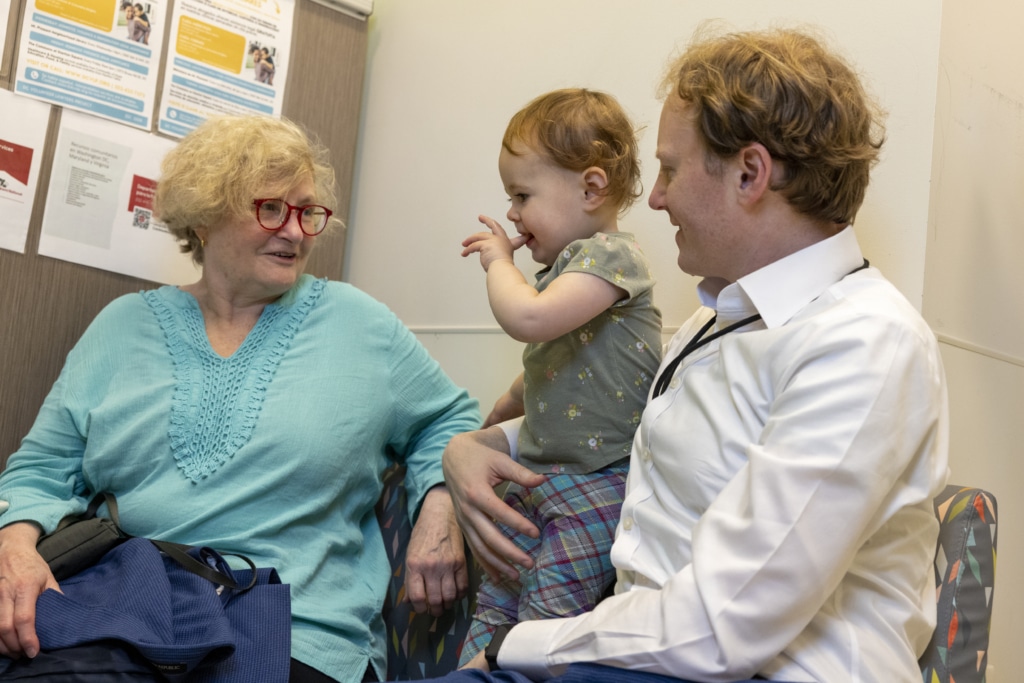
The science of early development highlights the remarkable opportunities to optimize child development. During the earliest months and years of life, the architecture of the brain is being built at an unparalleled rate in response to nurturing early experiences.
The neuroplasticity of early childhood makes young children incredibly vulnerable, but also incredibly resilient and responsive to positive intervention.
Christina Fiorvanti, PhD, HealthySteps Specialist and Psychologist at NYP Queens
Early identification and intervention for children with developmental delays or disabilities can improve cognitive and social skills, lead to higher achievement and greater independence, and promote family competence and well-being. The National Early Intervention Longitudinal Study (NEILS) found that 42% of young children served did not need special education by the time they reached kindergarten as a result of early intervention services. A recent analysis of six states also found that between 760 and 3,000 children receiving early intervention services through Part C per state were able to discontinue special education services at age 3, saving between $7.6 million to $68.2 million in one year
Supportive and caring relationships between babies and caregivers have a significant and enduring influence on young children’s growth and development. Many studies have documented the link between early loving, secure relationships and a child’s self-esteem, confidence, and ability to communicate, deal with stress, develop positive relationships, develop a conscience, and learn. We know that families are central to their children’s development. It is through relationships that babies discover who they are and how to interact with others.
Families of young children with developmental disabilities can be confronted with many challenges and stressors that can compromise their ability to foster their child’s health and development. Child development, as well as parental well-being, is enhanced when parents and other caregivers are encouraged to understand each child’s unique characteristics and respond with sensitivity and warmth.
Our “Baby Brain Map” is designed to educate parents, caregivers, and early childhood professionals about the critical stages of brain development in young children from birth to three years old.
Intervention is most effective when approached from a whole-child perspective. Multigenerational programs that focus on relationship-building and parent-child interactions while providing carefully and individually designed programs for young children can positively impact both children and parents. Comprehensive services in home and community settings provided by highly qualified staff, tailored to individual child and family needs and interests, embedded in typical family routines, and coordinated across agencies and systems have the most promise for the best developmental and societal outcomes.


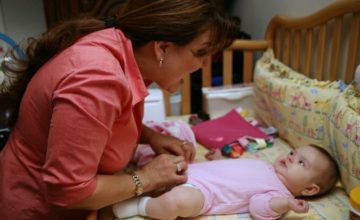

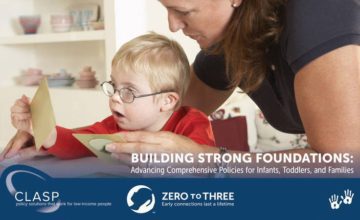
|
Join us for the 2025 LEARN Conference in Baltimore this October 8-9!
|